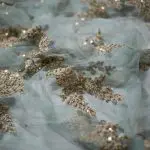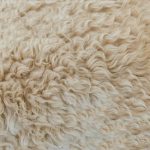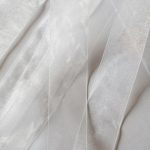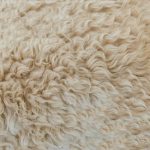When you consider fabric choices, understanding the differences between voile and twill can significantly impact your projects. Voile's lightweight, sheer quality lends itself to airy designs, while twill's structured, durable nature makes it ideal for tailored pieces. Each fabric has its unique aesthetic and practical applications, but the choice ultimately hinges on your specific needs. What factors will influence your decision? Exploring the nuances of these fabrics could reveal more than you expect about their versatility and care requirements.
Table of Contents
Fabric Composition
When comparing voile and twill, you'll notice distinct differences in their fabric compositions that impact their feel and use.
Voile is typically made from lightweight cotton or a cotton blend, giving it a soft, sheer quality. This lightweight nature makes it ideal for airy curtains, summer garments, and delicate overlays. You'll appreciate how its transparency allows light to filter through while still providing some privacy.
On the other hand, twill is often crafted from heavier materials like cotton, wool, or synthetic fibers. Its characteristic diagonal weave contributes to a durable, sturdy fabric that resists wrinkles and creases. You might find twill in applications ranging from tailored clothing like suits and trousers to home furnishings such as upholstery and curtains.
The difference in composition means that while voile offers a soft, flowing drape, twill provides structure and weight. Depending on your project, you'll choose one over the other based on these qualities.
If you're aiming for lightness and elegance, go for voile. If you need strength and durability, twill will better suit your needs. Understanding these fabric compositions will guide your choices effectively.
Weave Structure
When comparing voile and twill, you'll notice distinct weave pattern characteristics that set them apart.
Each fabric has a unique thread alignment that affects its texture and appearance.
Understanding these differences can help you choose the right fabric for your project.
Weave Pattern Characteristics
The weave pattern of voile features a loose, airy structure, while twill boasts a diagonal, textured design that adds durability and depth.
When you look closely at voile, you'll notice its light, sheer quality, making it perfect for curtains, blouses, and other flowing garments. The open weave allows for breathability and a soft drape, giving it a delicate appearance that flatters many styles.
On the other hand, twill's distinctive diagonal pattern creates a unique surface texture. This design not only enhances its visual appeal but also contributes to its strength and resistance to wear. You'll often find twill used in fabrics like denim and sturdy workwear because of its ability to withstand the rigors of daily use.
Both weave patterns have their own charm and utility. If you want something that feels light and airy, voile is your go-to. But if you need something durable with a bit more structure, twill is likely the better choice.
Understanding these weave pattern characteristics helps you make informed decisions when selecting fabrics for your projects or wardrobe.
Thread Alignment Differences
In voile, the threads are aligned in a simple over-and-under pattern, creating a lightweight fabric, while twill features a more complex alignment that shifts the threads diagonally, enhancing its strength and texture. This difference in thread alignment significantly impacts how the fabric performs and feels.
When you touch voile, you'll notice its airy, sheer quality, perfect for garments that require a delicate drape. Its straightforward weave means it's less durable, making it ideal for items like summer blouses or curtains where lightness is key.
On the other hand, twill's diagonal pattern gives it a robust structure. You'll find it's more resistant to wrinkles and wear, making it a popular choice for trousers, jackets, and upholstery. The way the threads are interlaced also adds a distinctive texture that can elevate the aesthetic of any item.
Weight and Thickness
Weight and thickness play a crucial role in determining how each fabric drapes and feels against the skin. When you're choosing between voile and twill, understanding these aspects can significantly influence your decision.
Voile is lightweight and sheer, making it ideal for flowy garments like summer dresses and lightweight curtains. You'll appreciate its airy feel, especially in warm weather.
On the other hand, twill is typically heavier and thicker, providing a more structured look. It's perfect for items requiring durability, like jackets or trousers.
Here are some key points to consider:
- Voile: Generally weighs around 2-3 ounces per yard, offering a delicate and soft drape.
- Twill: Usually weighs between 5-10 ounces per yard, resulting in a more substantial feel.
- Drape: Voile flows gracefully, while twill holds its shape, making it suitable for tailored pieces.
Durability and Care
When considering fabric choices, durability and care requirements can greatly impact your decision between voile and twill. Voile, while lightweight and airy, is less durable than twill. It can fray easily and may not withstand heavy wear or frequent washing. If you're looking for a fabric that maintains its beauty over time, you might want to lean towards twill.
Twill is known for its strength and resilience, making it a great choice for items that undergo regular use. Its tighter weave contributes to its durability, meaning it can handle wear and tear much better than voile. Plus, twill is often easier to care for, as it resists wrinkles and creases.
Here's a quick comparison to help you visualize the differences:
| Feature | Voile |
|---|---|
| Durability | Less durable |
| Care | Hand wash recommended |
| Weight | Lightweight |
| Fraying | Prone to fraying |
| Fade Resistance | Moderate |
Common Uses
Voile and twill serve distinct purposes in the world of textiles, each suited for different applications. When you're considering fabric for a specific project, understanding these common uses can guide your choice effectively.
Voile is lightweight and sheer, making it a popular choice for:
- Curtains: Its delicate nature allows light to filter through while providing a degree of privacy.
- Dresses: Voile's softness and drape make it ideal for summer clothing, such as flowy maxi dresses and blouses.
- Lining: Its lightweight quality allows it to be used as a lining for other garments, enhancing their comfort without adding bulk.
On the other hand, twill is known for its durability and texture, making it suitable for:
- Pants: Twill's sturdy weave provides the support and structure needed for everyday trousers.
- Jackets: It offers warmth and durability, perfect for outerwear.
- Table linens: Its strength ensures long-lasting use in dining settings.
Aesthetic Qualities
Both voile and twill offer unique aesthetic qualities that can enhance the overall look and feel of your projects.
Voile, with its lightweight and sheer texture, brings an ethereal and delicate touch to any design. The way it drapes creates an airy effect, perfect for flowing curtains or soft blouses. Its translucence allows light to filter through, adding a dreamy quality to your space or outfit.
On the other hand, twill features a distinct diagonal weave that provides a more structured and durable appearance. This gives it a refined and polished look, making it ideal for garments like tailored jackets or sophisticated skirts. The texture of twill adds depth, helping your designs stand out with a touch of elegance.
When choosing between these fabrics, consider the mood you want to convey. If you're aiming for softness and romance, voile's airy qualities are perfect. For a more formal or robust aesthetic, twill's structured nature shines.
Ultimately, both fabrics can elevate your creations, so think about how each can complement your vision and style.
Frequently Asked Questions
What Are the Environmental Impacts of Voile and Twill Fabrics?
When considering the environmental impacts of fabrics, you should evaluate their production processes, resource consumption, and biodegradability. Voile and twill each have unique implications, influencing sustainability and your choices for eco-friendly fashion.
Can Voile or Twill Be Used for Outdoor Applications?
You can use both voile and twill for outdoor applications, but consider their durability. Voile's lightweight nature may not withstand harsh conditions, while twill offers better resilience, making it a more suitable choice for outdoor use.
How Do Voile and Twill Compare in Terms of Breathability?
When you consider breathability, you'll find that voile's lightweight, sheer fabric allows for better air circulation, while twill's tighter weave offers less airflow. So, if breathability's a priority, voile's your better choice.
Are There Any Allergy Concerns With Voile or Twill?
You might encounter allergy concerns with certain fabrics, but most people find both voile and twill hypoallergenic. However, it's essential to check for specific dyes or treatments that could trigger sensitivities in some individuals.
Which Fabric Is Easier to Sew for Beginners?
When you're starting to sew, you'll find that lightweight fabrics like voile can be tricky. Twill's sturdiness and structure make it easier to handle, so you'll likely have more success with it as a beginner.
- How Does Ring Spun Cotton Affect Garment Fit and Shape Retention? - August 13, 2024
- What Are the Challenges in Producing Ring Spun Cotton? - August 13, 2024
- Is Ring Spun Cotton Suitable for Plus-Size Clothing? - August 13, 2024







